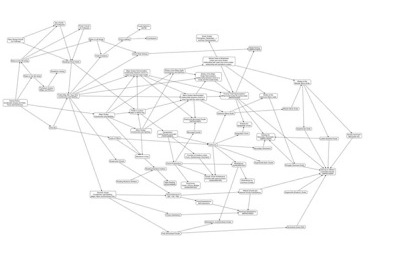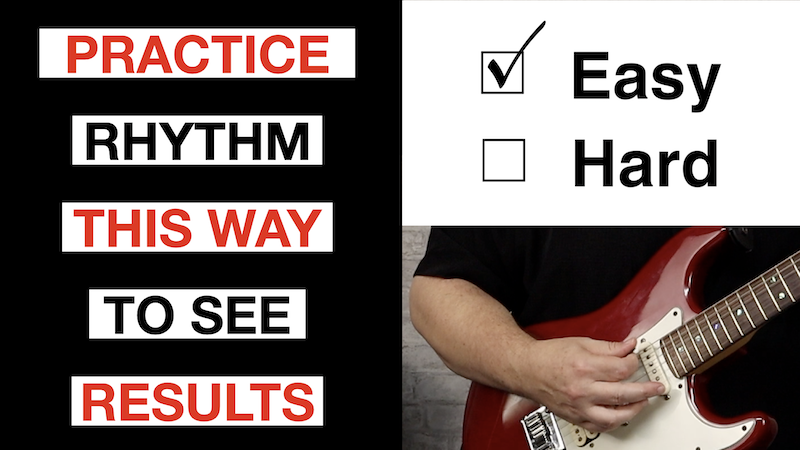Practice Rhythm This Way To See Results


Do you want some practical and easy ways to practice rhythm that you can use immediately to improve your playing?
Throughout my years of teaching guitar, I've had the privilege of engaging in insightful discussions with top guitar experts from all over the world. In an upcoming video, I'll be sharing a segment of my conversation with Mike Philippov from PracticeGuitarNow.com.
We'll delve into a range of highly effective techniques for honing your rhythm skills to elevate your lead guitar playing.
These invaluable strategies are tailored to benefit musicians of all levels, whether you're just starting out or have years of experience.
By incorporating these expert tips into your practice regimen, you can expect to improve your skills significantly.
Mike:
What if someone is really struggling with the basics of playing music, like keeping time and playing in sync with a backing track? Is there a simple way to help them play 16th notes in time with the backing track?
Brian:
Yes, if you're really struggling start by putting the guitar down and count along with the backing track. If you can say it comfortably, it will be easy to play it. You need to have a way to say every rhythm. If you're thinking 16th notes, you can do the Western way (1 e + a 2 e + a 3 e + a 4 e +a ) or the more percussive Konnakol way (Ta Ka Di Me). Either way, you will get the sound of a group of four internalized.
Once you get that down, then play something simple with it. It can be as basic as playing one note in time. It's okay if it doesn't sound cool. The important thing is we're getting our timing down. If your timing's better, everything you play will sound way better. You can play the fanciest thing in the world and have it be out of time, and it will sound terrible, whereas if you can play something simple in time, you can make it sound good. Everything sounds better in time.
Mike:
There is no difference between playing something really fancy and fast and something slow and simple. The thing that makes both of those sound good is being in time. If either one is out of time, it sounds terrible. I want to emphasize that again, what we're doing here is taking one aspect of improvising and doing this not with the intention to do a better solo at that moment but with the intention to give ourselves better skills from which we can then draw upon to do better solos down the road.
The same way you may isolate, let's say vibrato, and practice that for 30 minutes on one note and make that, you know, lock that in with the with the beat. Now we're doing that with rhythm like Brian was describing, and that sharpens another blade in your improvising arsenal.
I've been realizing more and more that timing, especially pinpointing the critical notes and mastering those, is an underrated aspect of increasing your speed. Many of my viewers are interested in technical playing, and I am, too. That's where Brian's advice really comes in handy. When you're trying to play something faster, the focus is often on moving your hands quickly. However, if you're more advanced, you understand it's not just about the physical motions. Instead, it's about relaxing your body and gaining control.
If you're playing a steady stream of 16th notes, the first note must lock in with the click. Most times, you'll find that it does not. Once you get it to lock in, you'll have so much more control over your playing, and speed is going to be a natural byproduct of that.
For those of you listening who like speed and want to play faster, just take the lick you're trying to speed up and focus on the timing of whatever the note values are. Make that timing tighter. I promise you will, at the very least, make it way more consistent at your current top speed. But most likely, your top-end speed is going to jump as well.
This is an essential insight. Have you found the same results in your case, Brian?
Brian:
Yes, you got to lock in on that beat. For the people who are really into speed and trying to play advanced things, like groups of elevens, you need to practice this way. If you are playing at an incredibly slow tempo, you can count a rhythm like that. At a faster tempo, there is no way to count it. You need to pay attention to the first and last notes and then do your best to make everything else in between as even as possible. There's no way you're counting at that high speed.
So you need to know what note is falling on the downbeat. The first note's happening here, here, and here again. That's how you have to practice. You must know where that downbeat is going to happen. You must practice your ability to land precisely where you want to.
Mike:
Yes, thinking of rhythm this way is also an excellent way to recover from mistakes while playing or improvising live. I remember seeing a video of Dream Theater playing live, and there was a moment when Mike Mangini got offbeat due to a sound issue. He lost track of the timing, but Jordan Rudess helped him find the count, and he was back in time on the next beat. I'm not saying anything negative about any of those guys - they are all amazing musicians. I mentioned this to illustrate the level of thinking involved in playing highly advanced technical music. Understanding rhythm and being able to find where the next beat is located helps you get your bearings if you ever get lost.
Brian:
Mike Mangini is the master of counting out loud. I'm not sure if you've ever watched his drum instruction material, but he can literally count everything he's playing. Even if this limb is doing one time signature and this limb is doing something else, with his way of thinking through rhythm, he can say everything out loud.
One of the big things people skip is taking the time to lay the foundation. That makes everything else so much easier. Everyone wants to skip ahead and play the cool stuff and not work on being able to say it first.
The tips in this conversation are extremely useful, and you should use them when you practice. If you want to expand on these ideas and learn the best way to practice any rhythm, I recommend you check out my free video guide, “Six Easy Steps to Learn and Play Any Rhythm with Perfect Timing.” In this video, I guide you through each step in the process and show you how you should practice rhythm to make the most progress. Click on the link to get your free video today.
https://www.musictheoryforguitar.com/Easy-Steps-To-Master-Rhythm